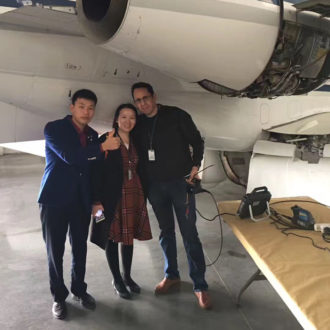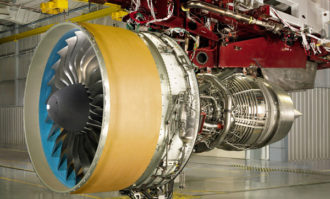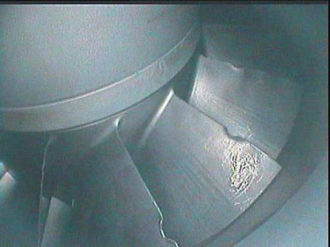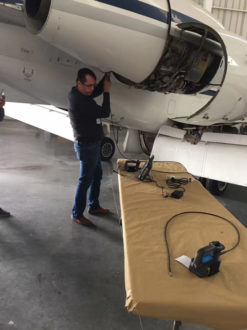What is an aviation engine borescope?
Aviation engine borescope is actually one type of industrial endoscopes. Simply speaking, they are instruments that detect and view the internal parts of an aircraft. It is an important tool for the aircraft’s non-destructive testing project. The aircraft maintenance engineer uses an aviation borescope camera to observe the surface of aircraft components to determine the engine and the turbine blades, the combustion chamber and the inner wall of the landing gear shock absorber whether there is damage.
Before the aviation borescope inspection, it may be necessary to clean the surface of the inspection surface, such as cleaning, dust removal, descaling, and surface protection. In addition, it may be necessary to open the inspection cover, the fairing, etc., or to drain the oil in the fuel tank and the landing gear shock struts to inspect the inner surface of the structure.
The importance of aircraft engine borescope in NDT
The aircraft engine is highly sophisticated precision machinery, including the five major components of the intake, compressor, combustion chamber, turbine, and tailpipe. These parts are complex in structure and process, require high material and manufacturing precision, and are difficult to process. Therefore, non-destructive engine endoscope detection in visual inspection is particularly important.
Borescope inspection, as the high-definition portable industrial endoscope is similar to gastroscopy and bronchoscopy commonly used in hospitals. With dedicated industrial endoscopic equipment, it is the only inspection method in route maintenance that can understand its internal conditions without disassembling the engine. It can be used to detect the main airflow passage components of the engine, high-pressure compressors, turbine blades of various stages, Parts such as fuel nozzles, combustion chambers, etc. that are difficult to disassemble and have poor accessibility.
In an aero engine, the negligence of any defect may lead to a safety incident. Effective detection technology must be adapted to meet the development requirements of future aero-engines so that their defects can be displayed more intuitively so that the relevant feature information of defects can be effectively extracted and identified automatically. The visualization of defects facilitates good analysis and processing of the engine to meet the needs of fast, efficient automated inspection in the future.
Borescope inspection aircraft engine has the following main functions:
1. Detect the burrs and residues of the main airflow passage parts of the engine, and whether there are cracks or related defects. Through the detection, the problem can be found more and the safety hazards can be solved;
2. Detecting surface defects of aircraft engine high-pressure compressors, including bumps, cracks, residues, flatness, etc. Any bubbles or cracks in any place may cause the plane to crash, not sloppy;
3. Detect cracks, bulges, bubbles, etc. of the blades of the engine turbine at all levels to ensure normal operation of the blades;
4. Detect the combustion condition of the engine to ensure that there is no debris in the combustion chamber and there are no defects on the surface;
5. Detect other conditions inside the engine.
Aircraft engine borescope for sale




